1. The Winchester Mystery House (San Jose, California)
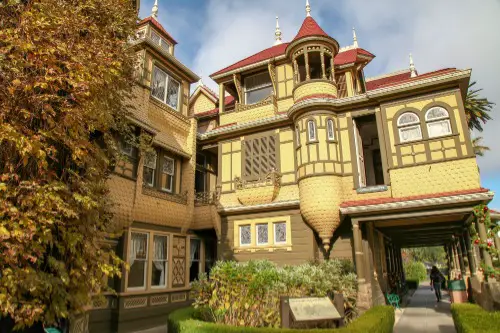
The Winchester Mystery House is one of the most peculiar mansions in the U.S. The mansion, once the personal residence of Sarah Winchester, the widow of the inventor of the famous rifle, is a sprawling maze of staircases that lead to nowhere, doors that open into walls, and hallways that twist in bizarre directions. Winchester, believing that the spirits of those killed by her husband’s invention were haunting her, continued to build the house nonstop for 38 years, hoping to appease these restless spirits.
What makes the house so fascinating is the sheer oddity of its design. With 160 rooms and 24,000 square feet, it’s filled with architectural quirks meant to confuse ghosts, such as windows placed on floors and doors that lead to nothing. While historians attribute much of the strange design to Sarah Winchester’s eccentric beliefs, some still wonder if there’s a deeper, unexplainable reason for the house’s convoluted architecture. Could there be a hidden purpose behind its chaotic layout, beyond superstition?
2. The Mystery of Coral Castle (Homestead, Florida)
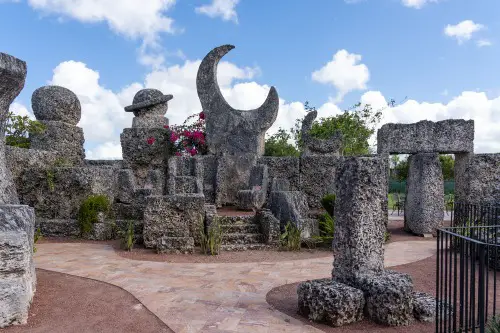
The Coral Castle is a stunning structure made entirely of limestone, built by one man, Edward Leedskalnin, in the early 20th century. What makes this place so mysterious is that Leedskalnin, a 100-pound man, built it all by himself, carving massive stones weighing several tons without the help of modern machinery. Even more perplexing is the fact that no one saw him working, and he never revealed his methods, leading to wild theories about how he moved the stones. Some say he used magnetic fields, while others believe he had some kind of secret technology or even supernatural powers.
Despite various investigations and attempts to replicate his techniques, no one has been able to explain how he did it. The sheer precision and scale of the structure raise eyebrows. Visitors to the Coral Castle often leave with more questions than answers, wondering if it’s just an impressive feat of engineering or something more extraordinary. The site’s aura of mystery has made it a favorite for conspiracy theorists and curious tourists alike. Many still wonder: could Leedskalnin have been more than just a gifted stonecutter?
3. The Biltmore Estate (Asheville, North Carolina)

The Biltmore Estate, the largest privately owned home in the U.S., is a sprawling mansion with its own mysteries. Built by George Washington Vanderbilt II in the late 1800s, the estate features an intricately designed house, beautiful gardens, and hidden passageways. What’s most perplexing about the Biltmore is its eerie, almost ghostly atmosphere. Several visitors and staff have reported unexplained sightings and sounds, leading some to believe the mansion is haunted.
While the Biltmore’s history is well-documented, the supernatural claims surrounding it remain unsubstantiated. The mansion’s expansive and labyrinthine interior, combined with its long history, makes it a fascinating, albeit unsettling, place. Could the Biltmore’s history have left behind more than just architecture? Or is it simply the result of its grandeur and age? Whatever the answer, the estate continues to captivate visitors, leaving them wondering what lies beyond its ornate walls.
4. The Devil’s Kettle (Judge C. R. Magney State Park, Minnesota)
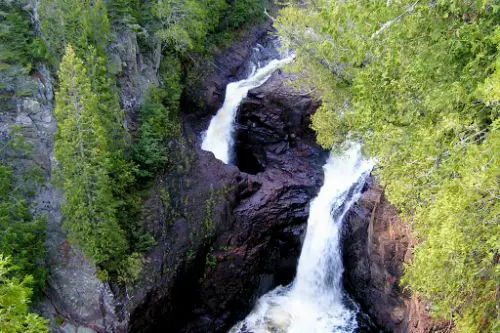
The Devil’s Kettle is a bizarre feature of Brule River, where one side of the river flows into a normal waterfall, while the other side empties into a mysterious hole. The hole, known as the “Devil’s Kettle,” appears to swallow the water, but where the water goes has never been conclusively determined. Scientists have attempted to track the flow using dye and other methods, but the results are inconclusive. The water doesn’t reappear anywhere downstream, making the phenomenon even more perplexing.
What makes the Devil’s Kettle so compelling is the lack of a clear scientific explanation. Some people believe it could be a natural underground river system that’s yet to be discovered, while others have darker theories, suggesting it could be a portal to another dimension. Locals and tourists alike have been captivated by this mystery for years, hoping that one day, someone will finally figure out where the water goes. Until then, the Devil’s Kettle remains an enigma.
5. The National Radio Quiet Zone (Green Bank, West Virginia)
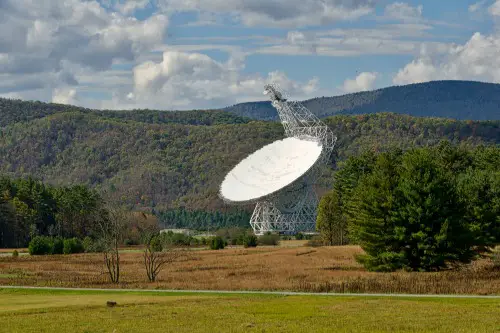
This 13,000-square-mile region in West Virginia is home to the Green Bank Telescope, the world’s largest fully steerable radio telescope. The reason it’s mysterious is that it’s one of the few places in the U.S. where radio signals are heavily restricted. The government designated this area a “quiet zone” in 1958 to prevent electromagnetic interference with the telescope’s research. However, the real mystery arises from the unusual activity reported within the zone.
Residents and visitors have reported strange occurrences, including a higher frequency of UFO sightings and mysterious sounds emanating from the sky. While many dismiss these reports as exaggerated, the idea that the government is intentionally keeping this area “quiet” has spurred all sorts of speculation. Could there be something being studied here beyond radio waves? Or is it just an incredibly remote place where mysterious phenomena tend to occur more frequently?
6. The Oak Island Money Pit (Oak Island, Nova Scotia)
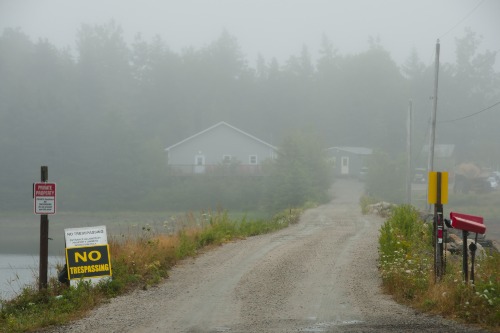
Though not located in the U.S., the Oak Island Money Pit is closely tied to American treasure hunters. The pit is believed to contain hidden treasure, possibly dating back to the 17th century. Over the centuries, various individuals and groups have tried to excavate it, but all their efforts have been thwarted by booby traps and floods. Despite numerous attempts, no one has ever managed to reach the bottom, leaving the mystery unresolved.
Theories abound about what might be buried there. Some believe it’s pirate treasure, others think it could be the lost manuscripts of Shakespeare or even the Holy Grail. Over the years, different artifacts have been discovered, adding fuel to the fire. The fact that no one has ever fully explored the pit has only increased its mystique. Whether it’s a case of bad luck or something more deliberate, the Oak Island Money Pit has drawn treasure hunters from around the world, all hoping to uncover its secrets.
7. The Mystery Spot (Santa Cruz, California)

The Mystery Spot is a gravity-defying tourist attraction in the hills of Santa Cruz, California. Visitors to the site are left bewildered by strange optical illusions where objects appear to roll uphill, and people seem to lean at impossible angles. Scientists have struggled to explain the phenomenon, with some suggesting that the area might have unusual magnetic fields or geological formations. However, no one has been able to fully explain why people experience such bizarre sensations when they enter the spot.
What keeps the Mystery Spot so popular is its ability to challenge our understanding of physics. While some visitors chalk it up to clever illusions and marketing tricks, others are convinced that there’s something much stranger going on. Could it be a natural anomaly, or is there some other, more unexplainable force at work? It’s the kind of place that leaves people questioning everything they know about reality.
8. The Ancient Pyramids of the Midwest (Cahokia, Illinois)
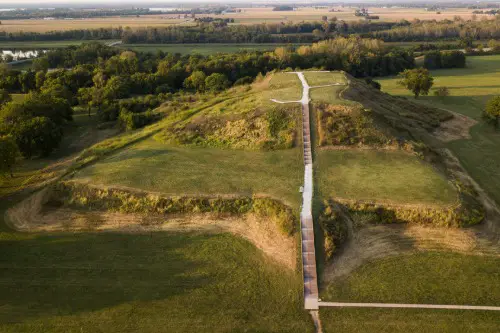
Cahokia is the site of a large pre-Columbian Native American city that flourished in the Mississippian culture from approximately 1050 to 1350 AD. The city’s most striking feature is its series of earthen pyramids, the largest of which is Monk’s Mound, standing 100 feet tall. What makes these pyramids so mysterious is that they predate other well-known ancient pyramid sites, like those in Egypt, by centuries.
Despite being one of the largest urban centers in North America during its peak, the reasons behind Cahokia’s rise and fall are not entirely clear. Archaeologists believe the pyramids may have been used for ceremonial or religious purposes, but why such a sophisticated society disappeared so abruptly remains a puzzle. The scale of the site, along with the lack of written records, makes it difficult to fully understand the culture that built it. Was it a society far ahead of its time, or was there something darker at play?
9. The Pyramid of Giza’s Replica (Midland, Texas)
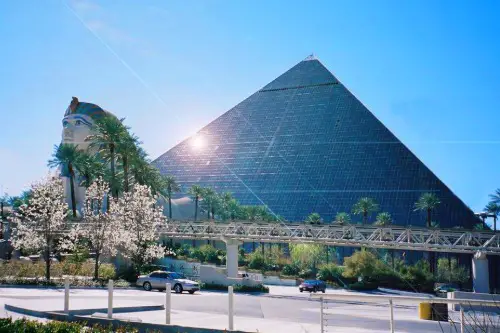
A massive replica of the Great Pyramid of Giza stands in the small town of Midland, Texas. What’s puzzling about this structure is why it exists at all. Built by a local oil magnate, it mirrors the exact proportions of the original pyramid in Egypt but without any clear cultural or historical reason behind it. The pyramid is part of a private property, and there are no public tours or explanations about its construction.
Locals have speculated that the pyramid was a tribute to the ancient Egyptians, while others wonder if it was simply an extravagant display of wealth. The fact that this Texas pyramid was built without any clear ties to ancient Egyptian culture, and in the middle of a small Texas town, raises questions. Is it a symbol of something greater, or just an eccentric man’s strange dream made into reality?
10. The Loretto Chapel Staircase (Santa Fe, New Mexico)
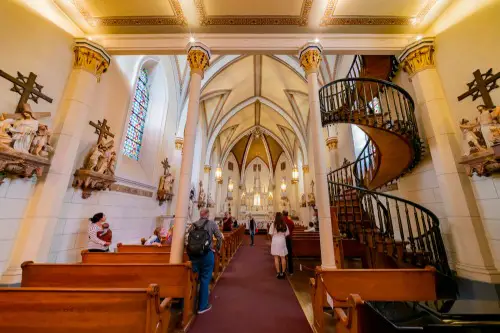
The Loretto Chapel in Santa Fe is famous for its miraculous staircase, a spiral staircase with two full 360-degree turns and no visible means of support. Legend has it that the staircase was built by a mysterious carpenter who appeared out of nowhere, built the staircase in a matter of days, and then vanished just as mysteriously. No one knows how the staircase was constructed without nails or other visible supports, leading many to call it a miracle.
While some think the story of the mysterious carpenter is a bit of folklore, the staircase itself remains a puzzling feat of engineering. The fact that the staircase has stood for over a century without collapsing is a testament to its design, and experts still can’t agree on how it was constructed. Whether you believe in the miracle or not, it’s a wonder that has fascinated visitors for generations.
11. The Stonehenge of America (Maryhill, Washington)
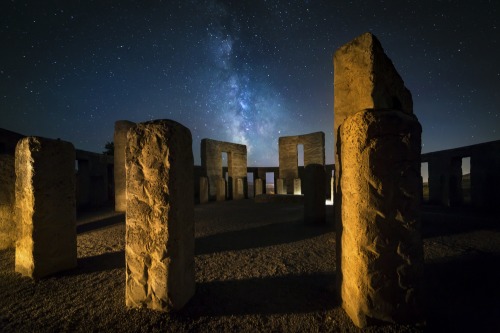
The Stonehenge replica in Maryhill, Washington, is a full-sized monument that mirrors the famous prehistoric site in England. Built by Sam Hill, a businessman and philanthropist, the replica is an eerie reflection of the original Stonehenge, but with no clear reason behind its construction. It’s been suggested that Hill built it as a tribute to soldiers who died during World War I, but the exact purpose remains unclear.
The most mysterious aspect of this structure is why it was built at all. Unlike the original Stonehenge, which has astronomical significance, this replica in Maryhill seems to have no such purpose. Some believe it was simply an artistic gesture, but the eerie similarity to the ancient site continues to spark debates. Is it a strange coincidence, or was Hill trying to channel some deeper meaning through the creation of this massive stone circle?
12. The Great Serpent Mound (Peebles, Ohio)
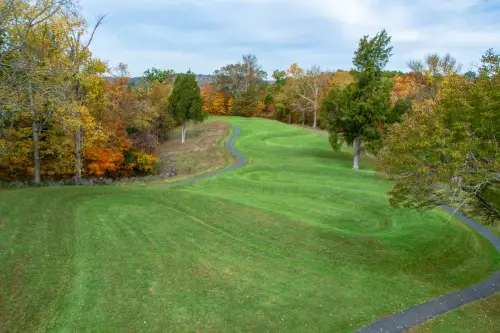
The Great Serpent Mound is an enormous earthwork in the shape of a serpent, undulating across the landscape. The mound is over 1,300 feet long and can be seen from the air as a massive, winding snake with a coiled tail. What makes the Serpent Mound so mysterious is not just its size, but its purpose. Archaeologists have dated the mound to at least 1,000 BCE, but the people who built it remain unknown.
One of the most intriguing theories is that it may have been created by ancient Native American cultures to represent a snake deity or to mark celestial events. Some even suggest that it might have astronomical significance, aligning with solstices or lunar events. But there’s no definitive evidence to support any one theory. The fact that the mound has survived for thousands of years without a clear explanation adds to its mystique. Could it be an ancient code or a forgotten ritual site? The answers remain elusive.


